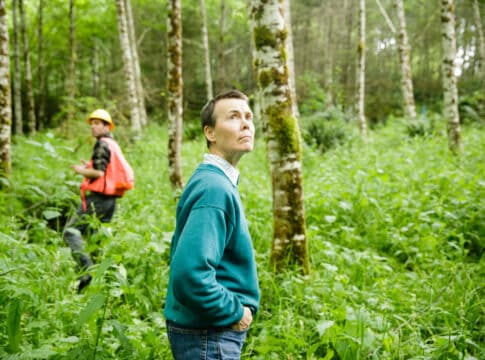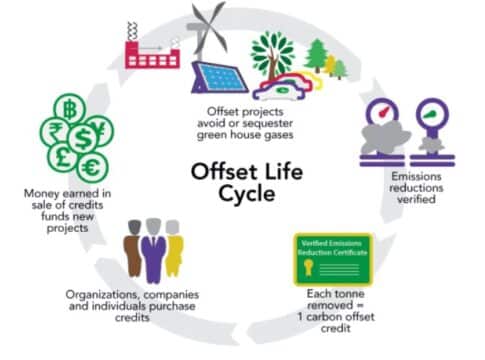US Small Landowners Are Taking Cut of the Carbon Markets
New opportunities in carbon markets are giving US small landowners alternatives to logging while mitigating climate change.
According to the nonprofit American Forest Foundation, the largest portion of forest land in the United States (39%) is family owned (properties between 30 – 2,000 acres). The rest are under the government, timber companies, and other entities’ ownership.
In this case, connecting small-scale landowners with carbon markets matters a lot.
In Pennsylvania, logging has been the common option to earn for smallholders to pay for their annual land taxes.
A landowner noted that many see timber as ‘free money up in the woods’. He further said that:
“It’s sort of the culture here. When we bought the property [55 acres behind their rural home in Pennsylvania], everyone was like, ‘Are you going to log it?”
But for him and his wife, they found a different solution – carbon credits.
Paying US Small Landowners for Capturing and Storing Carbon
Forest trees are nature’s technology for removing carbon. They represent the most viable, scalable, and cost-effective way to help address climate change.
That’s why American Forest Foundation developed the Family Forest Carbon Program. It brings together small landowners, companies, and policymakers to improve forest health.
The program seeks to help family forest landowners with as little as 30 acres access the fast-growing carbon markets.
The couple signed a 20-year contract with the program to pay for their work in growing and protecting trees to suck in and store carbon. They’ll receive income through carbon credits sold to companies wanting to reduce their emissions.
These credits are otherwise called carbon offsets – emissions reductions done elsewhere to cover for an entity’s hard-to-abate footprint. Carbon offsets have been a major measure among companies’ net zero emissions targets.
Corporations can gain more value in seeking natural climate solutions like protecting forests, including:
High integrity verified carbon credits generated by American small-scale landowners
An avenue to provide economic support for rural American families and communities
A critical role in improving forest health and wildlife habitat
US small landowners, in turn, will get cash for their efforts in tending forest trees. They can then use the income to cover their tax payments and stay away from logging.
A big concern, however, arises from this logging alternative. It’s the high costs involved (up to $200,000) for project development, its monitoring, and so on.
This is where the model of agricultural coops kicks in to bridge the gap.
US small landowners don’t have the ability to market directly to carbon credit buyers. But they can come together and form an aggregate to access carbon markets.
Tipping the scale on the value of forests
The US Senate had recently passed a climate legislation that’s seen to boost the efforts of family forest landowners.
The approved bill will provide $450 million to help private landowners toward forest management practices with climate benefits. It contains specific provisions on promoting carbon programs like the Family Forest Carbon Program.
Once signed into a law, the bill will unlock the power of small forest landowners to fight climate change.
This kind of program will help tip the scales on the value of forests, making standing trees more valuable than harvested timber. Then, in turn, it will guide private landowners to come up with sustainable forest management practices.
As per Sarah Hall-Bagdonas, senior forestry manager for the Family Forest Carbon Program:
“The majority of landowners don’t actually say their number-one interest is in timber but the majority do end up timbering their land… So the voluntary carbon market [VCM] really provides them with another option besides the timber market.”
The VCM value more than doubled to almost $2 billion from 2020 to 2021 as reported by the Ecosystem Marketplace. This growth can be a good opportunity for both timber management and carbon markets to flourish.
Yet, another issue emerges – carbon price.
Logging firm owners believe that the financial incentive to reduce timber harvest and store carbon instead is not enough.
A timber company director said that the carbon price has to be a lot more than its present value. It should be around $30 – $60 per ton of carbon, or 2x – 3x today’s price.
Still, many other US small landowners are also joining the new opportunities that carbon markets offer.
Some of them are not only protecting forest health but also safeguarding biodiversity and rare species. Many are also managing wildfire to protect centuries-old trees that sequester carbon.
With more and more efforts like the American Forest Foundation reaching out to family forest owners, their participation in carbon markets will grow.
Other couples begin the same journey by comparing timber and carbon prices. But some remarked that carbon credits feel like a real opportunity.
Another small landowner couple in western Pennsylvania said that:
“This is the business of conservation that is being sustained, supported by a different type of economy… other than conventional forest products. This is something that’s absolutely new.”
The post US Small Landowners Are Taking Cut of the Carbon Markets appeared first on Carbon Credits.



